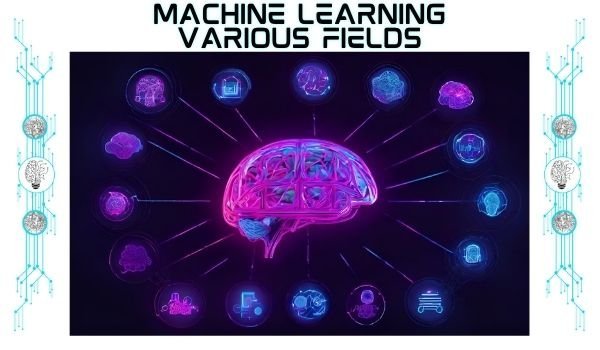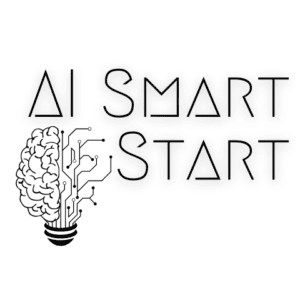Machine Learning (ML) has moved beyond merely a trendy term; it’s a technological revolution reshaping the industry. While it offers immense power and potential, it has its boundaries, like all tools.
This post aims to explore both the might and the confines of ML.
The Power and Limitations of Machine Learning is a wild ride folks.
It’s like being on a rollercoaster that takes you through breathtaking heights only to plunge into daunting depths.
And the crazy part? It’s not even close to stopping.
Machine Learning is a part of AI that permits systems to learn and improve from previous experiences without explicit coding. It offers data-driven insights and automation but requires ample data, and biases or poor-quality data can compromise efficiency.
This technology has been making waves everywhere. From predicting kidney disease progression to enhancing gravitational-wave detectors, there isn’t an area untouched by Machine Learning.
So, my dear Companion, are you curious about the scope and bounds of Machine Learning? As we venture deeper into the landscape of ML, it’s essential to recognize its impressive prowess and challenges.
While many stand in awe of the power and limitations of machine learning, the intricate mechanics of why it performs so effectively often remain shrouded in mystery.
So, hold on tight!
Our exploration into this captivating world promises to be nothing short of intriguing.

Understanding Machine Learning's Potential and Challenges.Table of Contents:

The Power of Machine Learning in Various Fields
Machine Learning, a subsection of Artificial Intelligence, is making significant strides across diverse scientific fields. Its transformative power manifests as it offers innovative solutions to complex problems.
READ MORE ( COMING SOON )

Revolutionizing Science: Machine Learning's Touch on Various Domains
The Marvel of Machine Learning: Capabilities Unleashed
Machine Learning, often called ML, represents a paradigm shift in how we think about problem-solving. Instead of hard-coding rules, ML teaches machines to learn from data. This evolving domain has opened up avenues in diverse sectors.
Here’s a deep dive into its capabilities and the revolutions it’s driving.

Machine Learning's Galactic Impact: From Neural Networks to Global Reach.1. Foundations of Machine Learning
- Neural Networks: Mimicking the human brain’s interconnected neurons, they’re perfect for complex tasks like image and voice recognition.
- Decision Trees: These operate by making decisions based on data valid for tasks like classification.
- Training Data: For ML to work, it requires vast amounts of data. This data is used to train algorithms, enhancing their accuracy and effectiveness.
2. Major Breakthroughs
- Image Recognition:
- Facial Recognition: Used in security and social media.
- Medical Imaging: Assists in diagnosing diseases using images.
- Speech Recognition:
- Voice Assistants: Think Google Assistant, Siri or Alexa.
- Transcription Services: Real-time transcription of spoken words into text.
- Medical Diagnoses:
- Predictive Analysis: Foreseeing potential health issues based on patterns.
- Personalized Treatment: Crafting treatments based on individual genetic makeup.
- Financial Forecasting:
- Stock Market Predictions: Analyses trends to predict stock movements.
- Risk Analysis: Helps banks decide whom to lend money to.
- Art Creation:
- Music Composition: ML can compose entirely new pieces.
- Visual Art: Producing paintings or designs based on learned styles.
3. Industry Transformations
- Healthcare:
- Disease Prediction: ML can analyze data to predict potential outbreaks.
- Drug Discovery: Accelerating the process of finding new cures.
- Entertainment:
- Content Recommendation: Platforms like Netflix use ML to suggest shows and movies.
- Game Design: Adapting gameplay based on player behaviour.
- Automotive:
- Autonomous Vehicles: Self-driving cars are made possible with ML.
- E-commerce:
- Customer Insights: Understanding customer preferences to boost sales.
- Supply Chain Optimization: Predicting demand to manage inventory.
4. Challenges and Concerns
- Data Privacy: With vast data being used, ensuring privacy is paramount.
- Bias in Algorithms: ML algorithms are only as good as their training data. If this data is biased, the results can be too.
- Job Displacement: ML-driven automation can lead to job losses in specific sectors.
5. The Road Ahead
- Continual Learning: Machines that can learn continuously, adapting to new data without forgetting old information.
- Ethical Considerations: As ML becomes more integrated into our lives, ethical guidelines will be vital.
Machine Learning is vast, dynamic, and ever-evolving. While it brings forth limitless possibilities, it’s essential to tread with awareness, ensuring that as we harness its capabilities, we also address its challenges responsibly.

Machine Learning’s Role in Predicting Kidney Disease Progression
In the realm of healthcare, machine learning unveils immense potential. A prime example is visible through its role in predicting kidney disease progression. Traditional methods often need to be revised due to the intricacy and variability inherent in human health data.
Recent research highlights how Machine Learning algorithms navigate vast amounts of patient data, identifying patterns indicative of kidney disease progression with reasonably high accuracy.
This enhances diagnostic precision and enables timely interventions that could potentially save lives.
This application underscores one aspect where machine learning significantly pushes boundaries within their respective fields.

Enhancing Gravitational-Wave Detectors with Machine Learning
Moving beyond healthcare into the astrophysics domain, we see another facet where machine learning flexes its muscle-enhancing gravitational-wave detectors used by scientists for observing astronomical phenomena like colliding black holes or neutron stars.
The enormous volume and complexity embedded within these detector-generated datasets render traditional analysis techniques inadequate for extracting meaningful information promptly and accurately.
Leveraging advanced gradient descent algorithms underpinning many popular deep neural networks allows us to overcome this challenge by efficiently isolating relevant signals amidst an oceanic noise backdrop more effectively than ever.

Machine Learning: The Key to Decoding the Universe's Whispered Secrets.The Limitations of Machine Learning Deployments
Machine Learning, while powerful and transformative, has its challenges. One significant hurdle lies in deploying machine learning algorithms – specifically regarding power consumption.
Data scientists have projected that data centres could consume up to 40% of global energy due to intensive machine-learning tasks within a few years. This massive increase in power usage presents considerable issues for businesses and society.
READ MORE ( COMING SOON )

Power Consumption as a Limiting Factor
Inferencing on edge devices like smartphones or IoT sensors brings this issue into sharp focus where compute power is limited. In these scenarios, trade-offs often must be made between performance and accuracy to stay within strict power constraints.
This is where high-level synthesis technologists come into play – their expertise becomes crucial in navigating such limitations effectively.
READ MORE ( COMING SOON )

The Need for Continuous Improvement
Beyond addressing concerns related to energy consumption, there’s an ongoing necessity for refining both machine learning algorithms and their training sets.
Quality datasets are instrumental in achieving relatively high accuracy during model training phases using gradient descent algorithms or deep neural networks like convolutional neural networks (CNNs).
- Precision & Memory Optimization: Improving feature map storage requirements can lead to better precision while limiting overall system demands, thus reducing the total cost per inference, eventually saving millions per year from reduced electricity costs alone.
- A Call For High-Level Synthesis Technologists’ Expertise: To ensure continuous improvement efforts yield results, it’s clear why many people continue working tirelessly every day, making advancements within this field despite inherent challenges – optimizing memory use and meeting strict precision needs.

Rethinking Learning through Lower Precision Options
Despite its potential, machine learning has challenges, including the precision of calculations. One such challenge lies in the accuracy of computations.
Thanks to its high precision, floating-point arithmetic has been utilized as the primary approach for Machine Learning activities. However, this has significant drawbacks – particularly when considering power consumption and efficiency in cloud and edge computing environments.
READ MORE ( COMING SOON )

Unveiling Clarity: Simplifying Learning through Lower PrecisionThe High Cost of Floating Point Arithmetic
In traditional computational models, floating point operations are exact yet resource-intensive. This means they consume more compute resources, increasing energy usage – an increasingly important issue as businesses scale up their Machine Learning deployments.
This begs us to question: Is there a way around these limitations? Lower precision options might be our answer. A prime example would be 8-bit integer (Int8) computations, which provide relatively high accuracy on most deep neural network tasks while drastically reducing power consumption.
READ MORE ( COMING SOON )

Moving Towards Efficiency with Lower Precision Options
Switching towards lower-precision computation doesn’t mean compromising quality outcomes; rather, it signifies striking a balance between performance and resource utilization, an essential aspect considering the power envelope constraints of machine learning deployments.
These networks perform well under reduced precision conditions because they deal primarily with image data, a domain where slight variations don’t significantly impact overall model performance.
This flexibility allows CNNs to effectively utilize Int8 operations without suffering from drastic reductions in output quality while benefiting from reduced feature map storage requirements, thus lowering memory bandwidth needs.
Exploring the power and limitations of #MachineLearning. Lower precision options like 8-bit integer computations offer high accuracy while reducing energy use – a game-changer for efficient AI deployment. #AI #DeepLearning Click to Tweet.

Future Prospects of Machine Learning
As machine learning progresses, new challenges and opportunities arise frequently. The road ahead focuses on two key areas: the optimization efforts by AI startups and investment opportunities in light of these hurdles.
READ MORE ( COMING SOON )
AI Startups’ Focus on Architecture Optimization
A wave of innovation has swept over the artificial intelligence landscape, giving rise to many ambitious startups.
These budding enterprises are making waves through their relentless pursuit of efficiency as they grapple with increasing power envelope issues. Their primary aim?
Optimizing both architecture and software stack.
This quest involves striking an intricate balance between reducing power consumption and maintaining reasonably high accuracy levels.
It is a task easier said than done due to its multifaceted nature. But it’s not all doom and gloom.
There have been some success stories where novel architectures have been developed specifically designed for Machine Learning tasks that manage feature map storage requirements efficiently, thus lowering energy usage without compromising performance.
READ MORE ( COMING SOON )
Investment Prospects Amidst Challenges
Datacenter power problems are growing exponentially alongside deep neural network deployments like convolutional neural networks or gradient descent algorithms used extensively in limiting Machine Learning deployments.
Despite their uncertainties, this burgeoning issue could draw more investments into solving these pressing concerns.
If executed properly, such funding would enable edge designs that perform computations closer to data sources to leverage those resources effectively even under challenging conditions related to computing power that isn’t readily available or affordable at scale, currently faced by many businesses today using AI technologies.
READ MORE ( COMING SOON )
FAQs in Relation to The Power and Limitations of Machine Learning

What are the limitations of Machine Learning?
Machine Learning has drawbacks, including high power consumption, data privacy concerns, and the need for accurate training data.
READ MORE ( COMING SOON )
What are the constraints of Machine Learning and AI?
The constraints of AI and Machine Learning include algorithmic bias, interpretability issues, overfitting to specific datasets, and susceptibility to adversarial attacks.
READ MORE ( COMING SOON )
What is the main problem of Machine Learning?
The primary issue with Machine Learning is that it requires extensive computational resources, which can lead to significant energy usage in data centres.
READ MORE ( COMING SOON )
Why is Machine Learning limited?
Machine Learning’s effectiveness is restricted by factors like the quality and volume of input data, complexity in understanding why specific algorithms work effectively, and power optimization challenges.
READ MORE ( COMING SOON )

Conclusion
The power of Machine Learning is transformative, revolutionizing fields from healthcare to astrophysics.
Its potential for predicting kidney disease progression and enhancing gravitational-wave detectors showcases its vast capabilities.
Despite its potential, Machine Learning has limitations due to power consumption. Power consumption remains a significant challenge in deploying these algorithms, with data centres potentially consuming up to 40% of energy due to Machine Learning tasks.
Trade-offs often must be made between performance and accuracy to meet power constraints.
The need for continuous technological improvement persists as we strive towards precision requirements.
Floating point arithmetic proves wasteful in cloud and edge computing, while lower precision options offer more efficiency – another facet of the complex world of machine learning.
The future holds exciting prospects despite challenges.
Startups focus on architecture optimization amidst concerns about increasing power envelope, indicating an industry readying itself for growth despite hurdles.
Yet understanding why Machine Learning works so effectively still eludes us, a mystery that may find answers through statistical physics or other yet unexplored domains.


